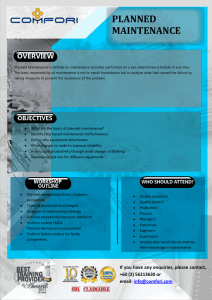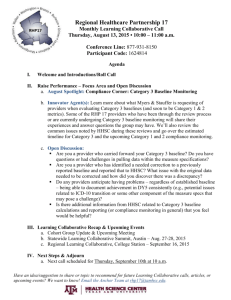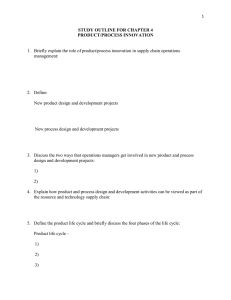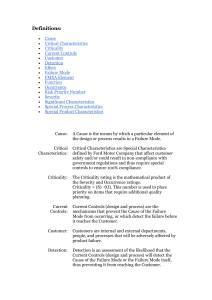Regional Healthcare Partnership 17 Monthly Learning Collaborative Call Meeting Minutes
advertisement
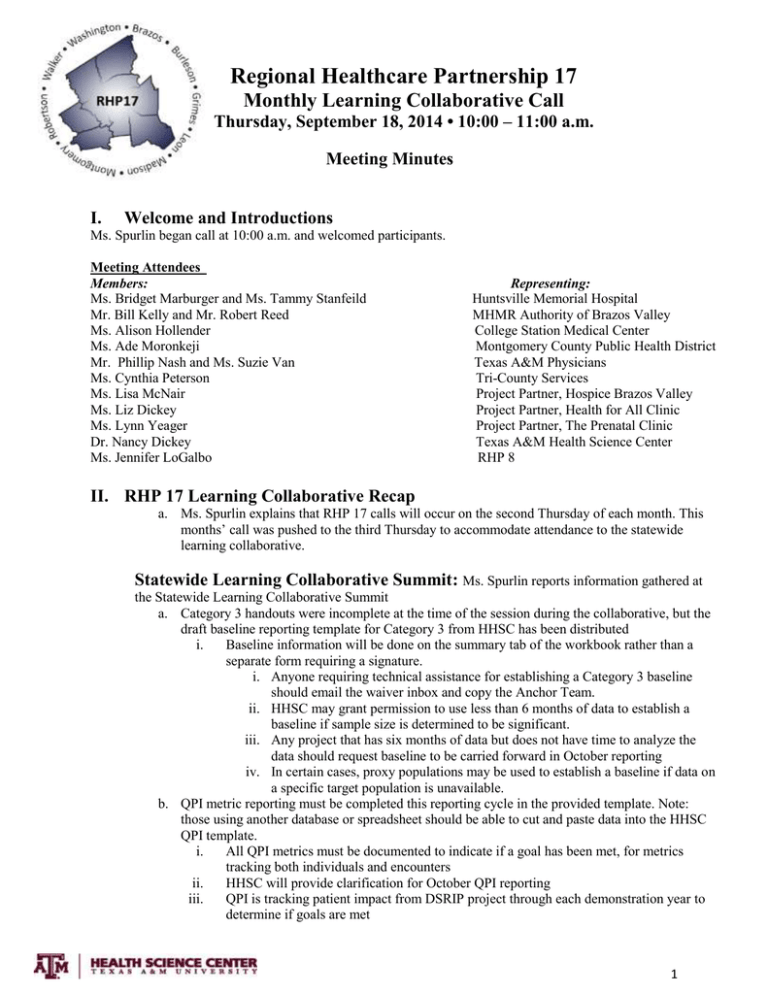
Regional Healthcare Partnership 17 Monthly Learning Collaborative Call Thursday, September 18, 2014 • 10:00 – 11:00 a.m. Meeting Minutes I. Welcome and Introductions Ms. Spurlin began call at 10:00 a.m. and welcomed participants. Meeting Attendees Members: Ms. Bridget Marburger and Ms. Tammy Stanfeild Mr. Bill Kelly and Mr. Robert Reed Ms. Alison Hollender Ms. Ade Moronkeji Mr. Phillip Nash and Ms. Suzie Van Ms. Cynthia Peterson Ms. Lisa McNair Ms. Liz Dickey Ms. Lynn Yeager Dr. Nancy Dickey Ms. Jennifer LoGalbo Representing: Huntsville Memorial Hospital MHMR Authority of Brazos Valley College Station Medical Center Montgomery County Public Health District Texas A&M Physicians Tri-County Services Project Partner, Hospice Brazos Valley Project Partner, Health for All Clinic Project Partner, The Prenatal Clinic Texas A&M Health Science Center RHP 8 II. RHP 17 Learning Collaborative Recap a. Ms. Spurlin explains that RHP 17 calls will occur on the second Thursday of each month. This months’ call was pushed to the third Thursday to accommodate attendance to the statewide learning collaborative. Statewide Learning Collaborative Summit: Ms. Spurlin reports information gathered at the Statewide Learning Collaborative Summit a. Category 3 handouts were incomplete at the time of the session during the collaborative, but the draft baseline reporting template for Category 3 from HHSC has been distributed i. Baseline information will be done on the summary tab of the workbook rather than a separate form requiring a signature. i. Anyone requiring technical assistance for establishing a Category 3 baseline should email the waiver inbox and copy the Anchor Team. ii. HHSC may grant permission to use less than 6 months of data to establish a baseline if sample size is determined to be significant. iii. Any project that has six months of data but does not have time to analyze the data should request baseline to be carried forward in October reporting iv. In certain cases, proxy populations may be used to establish a baseline if data on a specific target population is unavailable. b. QPI metric reporting must be completed this reporting cycle in the provided template. Note: those using another database or spreadsheet should be able to cut and paste data into the HHSC QPI template. i. All QPI metrics must be documented to indicate if a goal has been met, for metrics tracking both individuals and encounters ii. HHSC will provide clarification for October QPI reporting iii. QPI is tracking patient impact from DSRIP project through each demonstration year to determine if goals are met 1 c. HHSC will be hosting a webinar regarding Category 3 baseline and October reporting. The two topics may be combined into a single webinar but both will be covered. d. Roughly 50% of all projects are being reviewed in a Midpoint Assessment i. HHSC is aware of the technical issues hindering provider call-in during the Midpoint Assessment presentation and will post a recording of the presentation on their website. ii. The Anchor Team will distribute notes regarding the Midpoint Assessment once shared by HHSC; hopes that will be this week. iii. A project may have been selected for the Midpoint Assessment due to Phase 1 or valuation flags during process reviews or due to random sampling iv. Not all projects selected for Midpoint Assessment will be contacted by the third party reviewer or have a site visit during the Midpoint Assessment Process. v. A risk assessment rating will be given to each project, even those not selected for further review, from 1-5 on risk related to odds of completing the project as outlined and meeting all the metrics and impact. vi. According to the vendor during summit presentation, the only consequence of a selected project receiving a higher risk ranking is continuous compliance monitoring throughout DY4 and DY5. III. Raise Performance – Focus Area and Open Discussion a. Ms. Spurlin introduced Ms. Suzie Van of Texas A&M Physicians’ Brazos Valley Care Coordination Program b. Ms. Van shares her knowledge of FMEA/Cause Mapping as a proactive approach to continuous quality improvement (CQI) c. Free online tools to assist with FMEA available at ihi.org – other companies’ cause mapping also available for review d. Cause mapping is a visual representation of the FMEA process e. FMEA/Cause Mapping assists with CQI because: i. Points out areas of risks during an entire process ii. Looks at failure modes visually iii. Allows for tracking and trending data iv. Utilize process knowledge from all departments included in process f. The FMEA process follows the following steps: i. Select a process to evaluate ii. Recruit a multidisciplinary team iii. Have team collaboratively list all steps of selected process iv. Have team list failure modes and causes v. For each failure mode, have the team assign a Risk Priority Number, RPN, for likelihood of occurrence, likelihood of detection and severity vi. Evaluate the results vii. Use RPN to plan improvement efforts g. Ms. Van provides a handout with a more detailed outline of each step in the FMEA process. h. Ms. Van suggests that a first attempt of the FMEA/Cause mapping Process should select a fairly narrow-scooped process i. Ms. Van provides an example of a process map for making a pb&j sandwich j. FMEA/Cause Mapping allows you to control or eliminate risks, by implementing processes to address possible failure modes identified through the FMEA process Question & Answer open discussion: Ms. Spurlin inquired if the Joint Commission mandates which processes to cause map as they require hospitals to perform at least one FMEA per year or do providers have the option select? For example, do you pick the process related to any sentinel events or can you pick anything? Ms. Van reported that the hospitals are free to choose which process to cause map; if one had a sentinel event, it would make sense to look at that process and apply some sort of CQI and perhaps do a new FMEA map. 2 Ms. Spurlin asked if this was recommended approach for new initiatives such as some of those under DSRIP? Ms. Van indicated that absolutely, FMEA/Cause Mapping can be used on new processes that have not been implemented yet and it is recommended since this is a proactive approach. She further described how she had been using this method since early planning of the BVCCP DSRIP project and re-utilizing as implementation has occurred before each new step carried out. Floor opened to other providers – group asked if others familiar with/used FMEA in general and/or had applied to DSRIP projects? Ms. Tammy Stanfield of HMH indicated they were very familiar with FMEA in the hospital but had never thought to apply it to DSRIP. Discussed how they could see benefit and would be looking at their projects to see how they may be able to use this. No other questions posed by the group. IV. Learning Collaborative Updates/Upcoming Events a. Ms. Spurlin reports that the September newsletter was distributed in the first week of September – any suggestions for issues to highlight in the October newsletter are welcomed b. The Learning Collaborative Discussion Group is live and available for use; hope to see more use and activity during future planning and group development processes. c. Ms. Spurlin working to secure Cohort Group volunteer co-facilitators this month; plans to have kick-off meetings by end of October d. A joint Lunch & Learn Presentation for RHP 8&17 is occurring on September 23 and will focus on Appreciative Inquiry. e. Peer-to-peer opportunities available in other regions are posted on the RHP 17 Learning Collaborative webpage calendar. V. Next Steps & Adjourn a. The next call is scheduled for Thursday, October 9, 2014 at 10 a.m. 3
